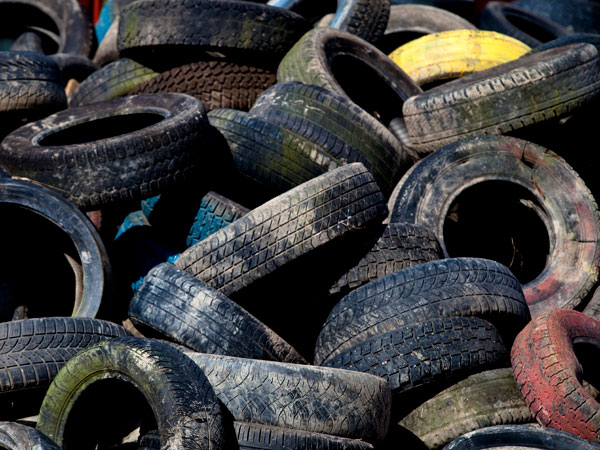Tyre recycling is one way to conserve finite resources and the potential uses appear endless. However, there is a need to increase trust so that tyre-based materials can be seen as raw materials. This can be achieved with the standardisation of relevant physical and chemical properties of tyre-based materials, as well as more risk assessment studies.
This is the conclusion of the Swedish National Road and Transport Research Institute (VTI) report End-of-life tyres applications – technologies and environmental impacts, published as part of the project Compilation and analysis of resource-efficient handling of end-of-life tyres.

The report, by lead author João Patrício and coauthors Professor Yvonne Andersson-Sköld and senior researcher Mats Gustafsson, analyses the handling of end-of-life tyres in Europe in general and Sweden specifically. The study examines the existing recycling technologies on the market to handle the tyres and manages their anticipated environmental impact. Funded by the Swedish Environmental Protection Agency, the study is based on a literature review supplemented by interviews with selected relevant stakeholders.
End-of-life tyres have many unique properties that make them suitable for a range of uses, many with enormous potential. The literature review identified over 20 different technologies and products for end-of-life tyre applications that take advantage of these properties. Material from tyres can be used in concrete products, asphalt, as a substrate for artificial turf pitches, in wastewater treatment, shoes, train and tram track beds, acoustic barriers, exterior tiles and many other applications. There is, however, a need for better marketing of these innovative products and more collaboration between different stakeholders.
The analysis of environmental and health impacts provides contradictory results. Recycling tyres reduces the need for several virgin materials. Nonetheless, while some studies show that end-of-life tyre materials do not present an environmental hazard, others suggest the possibility of leaching metals and polycyclic aromatic hydrocarbons (PAHs).
Scientifically well-founded, risk-based limit values are also required for substances in granulated rubber. This can contribute to greater acceptance and utilisation, especially in applications where tyre-based products may come into contact with sensitive demographic groups, such as children.
The standardisation of relevant physical and chemical properties of tyre-based materials may be a step in the right direction in terms of increasing the production of high-quality materials. Further comparative studies are needed between end-of-life tyres and virgin materials, in terms of both their environmental and economic impact. More laboratory and field studies are required to establish how great the benefits of recycling actually are.
“We have been in touch with contractors to discuss the best way to proceed from their perspective. We will be submitting grant applications so that we can develop more detailed documentation. This is necessary if we are to better assess the risks and sustainability of different methods for handling end-of-life tyres from a lifecycle perspective,” say João Patrício and Yvonne Andersson-Sköld.
Read more:
João Patrício, Yvonne Andersson-Sköld & Mats Gustafsson (2021):
End-of-Life tyres applications: Technologies and environmental impacts. (VTI report 1100A).
Text: Gunilla Rech/VTI
Translated by: Semantix AB
Contacts:

João Patrício
joao.patricio@vti.se
VTI, Swedish National Road and Transport Research Institute

Yvonne Andersson-Sköld
yvonne.andersson-skold@vti.se
VTI, Swedish National Road and Transport Research Institute

Mats Gustafsson
mats.gustafsson@vti.se
VTI, Swedish National Road and Transport Research Institute






Follow us: